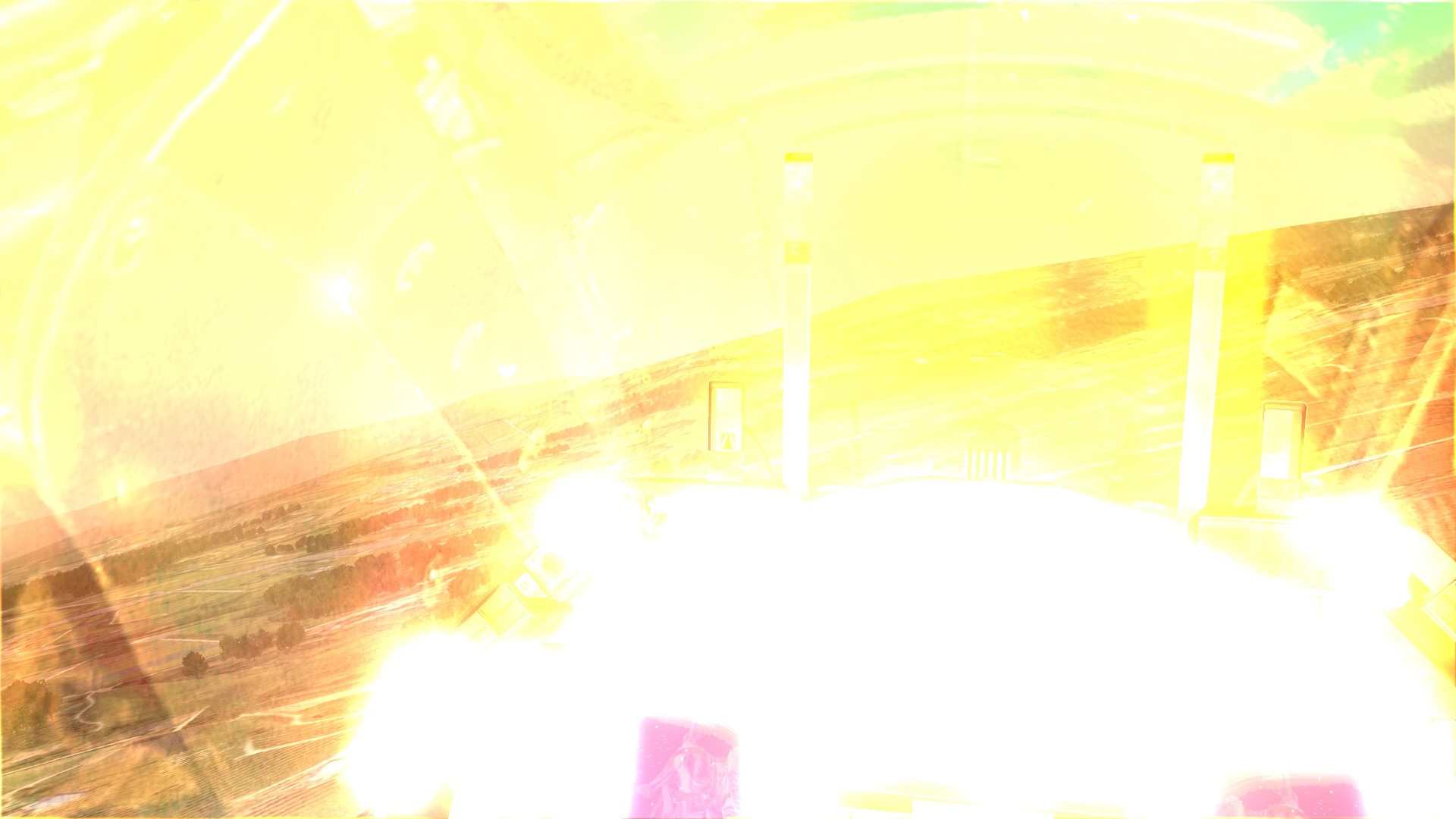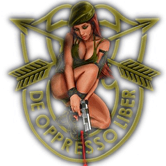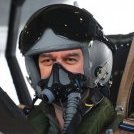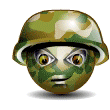-
Posts
42 -
Joined
Jeffu's Achievements

Private First Class (2/18)
84
Reputation
-
=VG= Kavelenko started following Jeffu
-

Important Changes and New Features in BMS 4.36
Jeffu posted a blog entry in How 2 git gud at Falcon BMS
From the BMS forums: Required fixes! Following the following the report of multiple issues: Loss of flight performance in MP with some loadouts Graphical bug on missile trail launch Please apply the following lines on your “falcon BMS user.cfg” (User/config folder): https://forum.falcon-bms.com/topic/22302/temporary-fixes-for-4-36-0 There is also a setting to enable a click sound for the afterburner detent: A-G Radar Changes (-34) The basic A-G systems have been made more realistic. They need range information in order to work correctly. The system can calculate the information it needs by using altitude information, or it can rely on a ranging sensor (A-G radar lock, TGP) to get the information it needs. (2.4.6, 4.2.9, 4.2.18) For visual modes (CCIP, DTOS), FCR slant range calculation uses either barometric altitude or the radar altimiter (BARO or RALT). For CCRP it will be best to use either precision steerpoints, or a sensor (A-G radar lock, TGP). The air to ground radar now has antenna elevation and azimuth control modeled. The A-G FCR will change the elevation automatically based on the cursor position and the plane's current altitude, but it is pilot adjustable if required. Antenna elevation can be calculated using either barometric altitude or the radar altimeter. (2.4.7) CCRP Changes (-34, 4.2.2, 4.2.13) Bomb lofting cues have been added. Laser Mavericks (-34, 4.3.10) The AGM-65L recreates the traditional Maverick MFD cues, despite not having an imaging sensor. The Maverick laser code must match the emitting laser, and the normal launch constraints of the AGM-65 still apply. The target must be lased for the entirety of the missiles flight. To change the laser code: Set the missile to BORE. Unlock the laser code by slewing the gimbal indicator over the "L" and pressing TMS Up. The L will change to a U. Using either TMS Left or OSB 7 (right side, second button), cycle through the polarity and after a few presses you will get to select the first number. The number will cycle automatically, select the correct number by pressing TMS Left or OSB 7 at the correct time. For each number you must cycle through the polarity again. Afterwards, press TMS Up again to lock the laser code. The U will be replaced by an L. HARM threat tables (-34, 4.4.1) Threat Tables are now customizable through either the DED or the data cartridge. HMCS RWR indicator (-34, 2.11.6.10) The HMCS now includes a directional RWR indicator. The gap in the circle represents your view, and the diamond represents the direction of the emitting radar. HMCS Alignment, A/G Markpoints (-34, 2.11.2, 2.11.6) The HMCS must now be aligned using the HMCS DED page (List->0->RCL->SEQ) For coarse alignment, press M-Sel (0), then align the HMCS cross with the cross on the hud and press Cursor Enable (Insert). Press M-Sel again to exit. For the other two alignments, press M-Sel to start, then slew the cross with the cursor until it is lined up, and then press M-Sel again to exit. https://www.youtube.com/watch?v=acciwGQDlVE Lighting The exterior lighting panel is now fully implemented. Anti-Collision now supports all settings. 1 through 4 are flashes in sequence, A through C are in Morse code. Wing/Tail and Fuselage settings are now separate, and both bright and dim settings are supported. Formation light brightness is implemented. Covert settings are implemented. ALL sets all lights to covert, A-C sets the anti-collision light to covert, FORM sets the formation and Wing-Tail lights to covert. The Aerial Refueling light will activate when the knob is turned up and the refueling door is open. Gunsight Changes (-34, 2.4.5) https://www.youtube.com/watch?v=6-Ma3l9onjw Drogue refuelling https://www.youtube.com/watch?v=mjlUeAStyzw JTAC Too long to cover here, see BMS-Training.pdf Mission 27. -

Falcon BMS Keybindings for New Players
Jeffu commented on Jeffu's blog entry in How 2 git gud at Falcon BMS
Thanks for letting me know, I've rewritten that section and updated the links. UOAF has moved to Discord, but their Wiki is still around.- 3 comments
-
- 1
-

-
- falcon bms
- noobs
-
(and 1 more)
Tagged with:
-
=VG= m823us started following Jeffu
-
I write this so we have something to point new people to. This will be a quick how-to regarding keybindings for players new to BMS and unsure of what controls need to be bound. Also explained will be a vital control mechanic in BMS known as the Pinky Shift button, and how this will help you when you don't have $500 to blow on a new stick. Anybody used to a universal "do this" buttons as found in any normal video game needs to know that every in-game control mimics a control in the real F-16, and many of them serve multiple purposes. Attached in image format is a list of buttons on the real F-16 HOTAS, their functions and their in-game callbacks. For those who don't yet know what the above is and what it means for you, below is a basic rundown of callbacks, how important they are and what they do. As I rarely use the keyboard, I can't say what the keyboard binding for any of these would be. For those with not enough buttons it's perfectly fine to put things wherever you want them, as long as they're easy to remember and (preferably) make sense logically: Vital keys: SimTriggerSecondDetent = Gun SimPickle = Weapon Release SimTMSUp = Target Select / "Do" button SimTMSDown = Target Deselect / "Undo" Button SimDMSDown = Switch SOI (Switch MFD) SimMissileStep = Change weapon / pylon / bombing mode SimRadarElevationUp = Raise Radar Altitude SimRadarElevationDown = Lower Radar Altitude SimDropProgrammed/SimCMSUp = Drop countermeasure prgms. 1-4 SimToggleMissileCage = Cage / Uncage Sidewinder seeker, remove maverick cover SimHotasPinkyShift = Zoom / change FOV when press, acts as shift button when held SimCMSRight = ECM Standby SimCMSDown = ECM Consent SimSelectSRMOverride = Dogfight override mastermode SimDeselectOverride = Cancel override Hat Switch: SimCursorUp = Radar cursor SimCursorDown SimcursorLeft SimCursorRight (Recommendation) Shifted Hat Switch: SimTransmitCom2 = Transmit VHF Radio SimTransmitCom1 = Transmit UHF Radio SimCommsSwitchLeft = A-A Datalink Transmit (not as important for beginner) SimCommsSwitchRight = A-G Datalink Transmit (not important for beginner) Brakes: SimWheelBrakes = Wheelbrakes (K by default) AFBrakesToggle = Toggle airbrakes Or: AFBrakesIn = Airbrakes retract AFBrakesOut = Airbrakes extend Useful, not vital: SimDMSLeft = Cycle left MFD pages SimDMSRight = Cycle right MFD pages SimSelectMRMOverride = Missile override mastermode, for quick A-A use SimSpotLight = Cockpit spotlight, comes on with battery power, recommend bind to keyboard Things I've never used: SimDMSUp = Change SOI to HUD For users with no head tracking I highly recommend never using the hat switch for viewing and learning to use the mouse effectively instead, as it frees up the hat switch for vital functions. By default, one can look around by holding down the right mouse button, and can drag the head around using the middle mouse button. The pinky shift mechanic in BMS allows the pinky button on the F-16 HOTAS to function similar to the shift button on your keyboard, or the function button on some laptops. Just as the keyboard shift button allows other buttons to have multiple uses, the pinky shift mechanic allows you to effectively have two callbacks assigned to one joystick button and allows you to access the second callback by holding down SimHotasPinkyShift and pressing the desired button. SimHotasPinkyShift must be assigned twice to the desired shift button, as the act of pressing the shift button will shift the shift button too, and the game will not recognize the release of the button unless the callback is present in both the normal and shifted states. The only issue is that this mechanic is not accessible through the in-game setup screen (the in-game editor has other issues as well, one being that it does not actually show the correct callback names). To make use of it, one has to resort to using spreadsheets included with the game, third party editors (linked below), or modifying the keyfile by hand. The best way of binding your controls is currently the Alternative Launcher, which takes the place of the stock BMS launcher and has more functionality. https://github.com/chihirobelmo/FalconBMS-Alternative-Launcher/releases Other References: https://codex.uoaf.net/index.php/Controllers Quick HOTAS Setup.key See Also:
- 3 comments
-
- 6
-

-
- falcon bms
- noobs
-
(and 1 more)
Tagged with:
-
=VG= BLuDKLoT started following Jeffu
-

Important Changes and New Features in BMS 4.35 (Part 1)
Jeffu posted a blog entry in How 2 git gud at Falcon BMS
The release of 4.35 brings updates to realism to the aircraft, weather and A-G combat. In this post I'll cover the basic things necessary to get people flying in the new release. All images are from BMS manuals. Part 1: Procedural changes Canopy update (-1, 1.2.1.16): Canopy switch and yellow spider are now separate. The canopy switch is no longer a toggle, the canopy is now raised with a left click and lowered with a right click. Clicking on the yellow spider inflates the seal around the canopy to allow for cockpit pressurization, and also acts as a safeguard for the canopy switch. Please note the switch is not visible after a left click. JFS 1&2 (-1, 1.2.1.13): Both Jet Fuel Starter switch positions are now modeled. The JFS works by venting one or both hydraulic accumulators to a hydraulic start motor. The START1 setting is less powerful as it uses only one hydraulic accumulator at a time, and has a 50/50 chance of starting the engine successfully. Using only one accumulator at a time means that you get a second chance at starting the engine. The START2 setting uses both hydraulic accumulators and has a higher chance of starting the engine, but this means you only have one chance at engine startup before you need to ask ground crew to recharge the JFS. A solid green JFS run light after ~15 seconds indicates a good JFS start. No green light after engaging the JFS means it has failed to reach operating speed. A slow JFS light flash (1/sec) indicates JFS overheating, and a fast flashing light indicates JFS failure. Anti-Ice (-1, 1.2.5.10, 1.6.4): Engine icing is now implemented. The ANTI-ICE panel has a three-position switch to control engine anti-ice (OFF-AUTO-ON). Anti-ice is turned on manually during engine start to verify operation, and set to Auto for flight. Use of engine anti-ice will lead to higher engine temperatures (FTIT) and lower engine performance. Brakes & Hydraulics (-1, 1.2.2.6, 1.13): DN LOCK REL button is now implemented. This button is a bypass for the safety mechanism (a solenoid) that prevents raising the landing gear while on the ground. In the event that the safety mechanism fails it may prevent lowering of the landing gear in-flight. BRAKES channel switch is now implemented. Both Channels 1 and 2 are redundant, but only Channel 2 has an alternate power source. The PARKING BRAKE switch ANTI-SKID option is now implemented. The middle position is anti-skid on, the down position turns off all anti-skid functions for brake channel 2 and turns off only touchdown anti-skid for channel 1. Anti-skid is only available once exceeding 12 kts ground speed and will stay available until under 5 kts. Maximum braking at slow speed will not trigger anti-skid and may blow a tire. Arrestor cables now implemented. BMS 4.35 implements working arrestor cable systems at non-generic airbases. -
Gaming on Linux has largely turned to virtual machines. It is possible to hand a GPU over to a virtual machine to allow it to play games and use hardware acceleration for programs at native performance.
-
I used both VirtualBox and VMWare when I still used Windows. VMWare came across as a more polished product, but either will work fine for what you need it to do.
-

VG Air Force - Group Discussion
Jeffu replied to =VG= SemlerPDX's topic in VG Air Force's Officers Club
I don't see a problem with it if they become active in the community and are showing progress in learning the game. The only basic game requirements that I can think of would be to know how to map and test your controls, and to be able to get into 3D. -
Here's my proficiency rating proposal, complete with appropriate manual references for future training purposes. It might be interesting to have an accompanying document reader that could interact with the list. The levels can be renamed or reworked. Please chime in if you see something missing or think something is in the wrong place. A-A Bronze Basic knowledge of FCR: Range-while-scan, Targeting, Antenna elevation (-34, 1.4.4) Basic employment of AIM-120 and AIM-9 with radar targeting (-34, 2.1) Basic missile defense, use of countermeasures (Chaff, Flares) (-34, 1.7) Engagement: RWR, Fight or Flight, Target sorting (-34, 1.4.4.1, 1.6.1.4 to 1.67) Aircraft Identification using TGP (-34, 1.10.7.5.1) Silver Intermediate FCR, sorting and assigning datalink contacts (-34, 1.5.5) IFF Basics (-1, 1.16, 1.16.4.2) Engagement: Threat Assessment Missile launch cues (-34, 2.1.3) Intermediate missile defense, ECM (-1 1.2.1.8), (-34 1.7 ) Dogfight master mode, helmet radar sighting (-34, 1.11) Gold Advanced FCR, all modes (-34, 1.4.4.1.3) Engagement: Knowledge of common weapons and flight profiles of threat aircraft Group BVR tactics Basic Dogfight Proficiency Full A-A Datalink Proficiency (-34 1.5) A-G Bronze A-G FCR (-34, 1.4.5) TGP Basics (-34, 1.10) CCRP and CCIP(-1 1.4.5.2) Dumb bombs Cluster munition settings (-1 1.4.5.2) GPS/JDAMs/SDBs (-34, 3.4) Basic HARM, HAD, HTS pod (-34, 3.3) Silver Marking target areas with Steerpoint Lines and Pre-Planned Threat points (in map) TGP Lasing (-1, 1.2.3.1) (-34 1.10.4) Laser guided bombs (-34, 1.10) Adv HARM, WPN Page (-34, 3.3) Basic Mavs, without handoff (-34, 3.2) AG Datalink cursor (-34, 1.5.6) Gold Advanced TGP features: LST, Buddy Lasing, Frag Circle (-34, 1.10.7.4, ) Mavs w/ handoff (-34, 1.10.8, 3.2.8, 3.2.9) Advanced bomb delivery: Popup, Toss Markpoints (-1, 1.3.10) AG Datalink Steerpoints (-34, 1.5.6) Low level delivery of retarded weapons (Mk82 Air, Mk82 SE, Mk84 Air, BLU) F-16 Bronze Working IVC (Technical Manual 18.1, 9.1) Maintain contact with flight lead after takeoff Singleplayer basics: Training TE01 (Training Manual Mission 01) (BMS Comms-Nav Part 1) Ramp Start (-1, 2.1) Communicating with tower using radio presets, (Technical Manual, 9.1), (-1, 1.3.13, 1.3.14) Taxi (-1, 1.13) Takeoff, Departure Steerpoint Navigation (-1, 1.3.4, 1.4.3, 1.5) Contacting approach, Landing (-1, 1.5.3, 1.13, 2.3) Silver Basic airmanship: Level turns, speed control, loose formation, formation knowledge All the Controls (-34 1.1.1.4) Recovering from a hot start (-1, 3.5) Learning the instruments (-1, 1.2.3.2 to 1.2.3.22) Visualizing the Bullseye ILS Basics (-1, 1.3.5) Advanced Radio Management & Controls, entering manual frequencies, verifying and changing presets in-flight (BMS Comms-Nav Part 2) (-1, 1.3.13, 1.3.14) DED (-1, 1.3) Using Master Modes (-34 1.1.2), (-1 1.4.18) MFD Controls, Pages (-1 1.4) Datalink basics: modes, sending information (-34 1.5.5.1, 1.5.7) Gold Advanced airmanship: Tight formation, flying as #1, leading a flight Deep Stall Recovery (-1, 4.4) Flying on instruments, inclement weather approach and landing, HSI proficiency (-1 1.2.3.14-15) (-34 1.3) (BMS Comms-Nav Part 3 & 4) Aerial Refueling Advanced recovery: formation landing and overhead break (BMS-Comms-Nav 1.4.1, 1.4.3)
- 10 replies
-
- 5
-

-

-
- vg air force
- vgaf
-
(and 4 more)
Tagged with:
-
I think a proficiency rating system for different combat roles and aircraft would be good. Something like a bronze, silver and gold for A-A, A-G and for various aircraft would help people track their progression in the game as well as help instructors with what topics to cover.
- 10 replies
-
- 2
-

-
- vg air force
- vgaf
-
(and 4 more)
Tagged with:
-
Server restarted, still day 5. I'll let Semler make his campaign changes and reset it to day 1 whenever he has time.
- 1 reply
-
- 2
-

-
Restarted, currently on day 6.
-
New version came out in April: https://www.benchmarksims.org/forum/showthread.php?35505-Falcon-BMS-4-34-Full-Installer
-
What exactly do you guys need from a guide? I made a stripped down ramp start video in 4.33 a few years ago but never made it public. It covers the basics of starting the jet and powering up the systems as well as radio basics. It needs revision, doing the throttle movement part in 4.34 will lead to engine failure on startup. In 4.34 it needs to be kept stationary until the throttle detent is clicked.
-
Hello, I've been flying in the FO event as well. I'll have to try and hop on with you guys.
-
=VG= SemlerPDX started following Jeffu
-
Click the Comm Plan button and read the briefing. Ground control is UHF 2, Tower is UHF 3, Approach/Departure is UHF 4, AWACS is UHF 6, AI flight members are on VHF 15.







